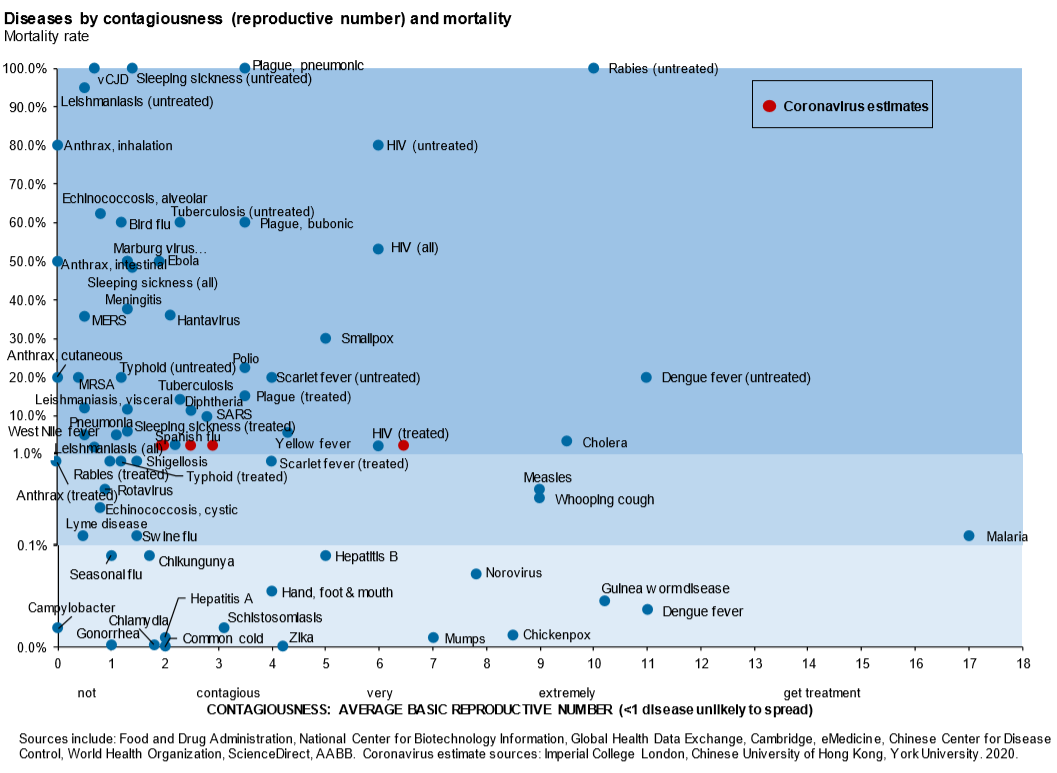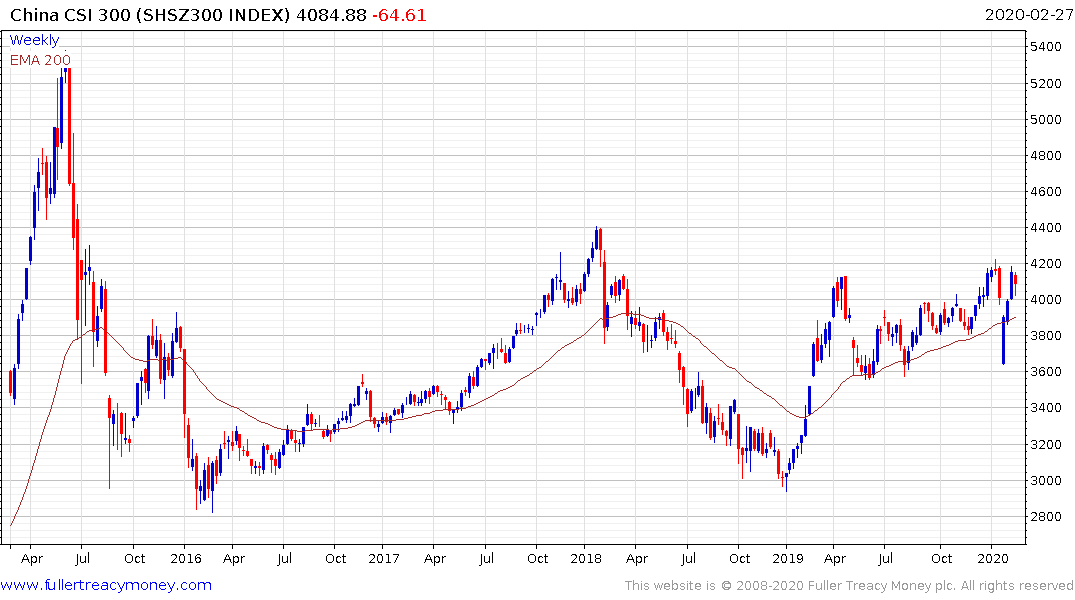Eye on the Market February 2020
Thanks to a subscriber for this report from JPMorgan. Here is a section:
Here is a link to the full report and here is a section:
Economic and market reactions to pandemics are more a function of mortality than contagion per se. Here’s the latest from China’s Center for Disease Control. COVID-19 mortality rates have been drifting higher from 2.2% to 3.5% over the last month. That said, COVID-19 primarily affects older individuals with pre-existing conditions whose mortality rates are much higher than the average. Individuals below 50 and/or those with no pre-existing conditions have mortality rates well below 2% (almost 0% for people below the age of 40). As a percentage of hospitalized cases with a specific outcome (mortality or discharged/recovered), mortality rates are closer to 10%. For a comparison of COVID-19 mortality and contagion characteristics vs other diseases, see page 8.
When a virus either has a cure or palliative treatments that mitigate mortality, then quality of healthcare systems could have a large effect on cross-country mortality rates. But with COVID-19, that’s not the case: there’s no cure yet, and palliative care does not seem to have much of an impact on outcomes. In China, the median number of days for those who died from the disease was only 11-14 days.
What might play a bigger role: behavioral and environmental factors. COVID-19 is particularly lethal for people with compromised lung capacity. Here’s where China has a problem: it has high smoking rates and terrible air quality (see chart). There are countries with high smoking rates but better air quality (Russia, Greece, Indonesia), and countries with poor air quality but low smoking rates. China, along with Nepal, Laos and Bangladesh, have both. If these factors do contribute to mortality rates for COVID19, mortality rates outside China might be lower.

The graphic of mortality versus contagion included in the appendix of the report is the best one yet comparing COVID-19 with other killers.
The proximity of the Spanish flu to the range of potential outcomes from the new virus is obviously a topic of conversation. The Spanish flu came in three waves, in Spring 1918, Autumn 1918 and Winter 1919 and disproportionately killed young people. COVID-19 on the other hand tends to most kill people with compromised lung function and older people.

China is getting back to work, albeit slowly, but that leads me to the conclusion they have given up on containment. The bigger picture is the massive stimulus being put in place to make up for the risk they are taking on. Helicopter money in Hong Kong means the virus scare is likely to usher in a tsunami of monetary assistance. It is already buoying the domestic Chinese stock market and potentially offers a template for what we can expect from other governments faced with similar challenges. In fact, it is probably what will be required from other monetary and fiscal authorities to avoid a recession.


